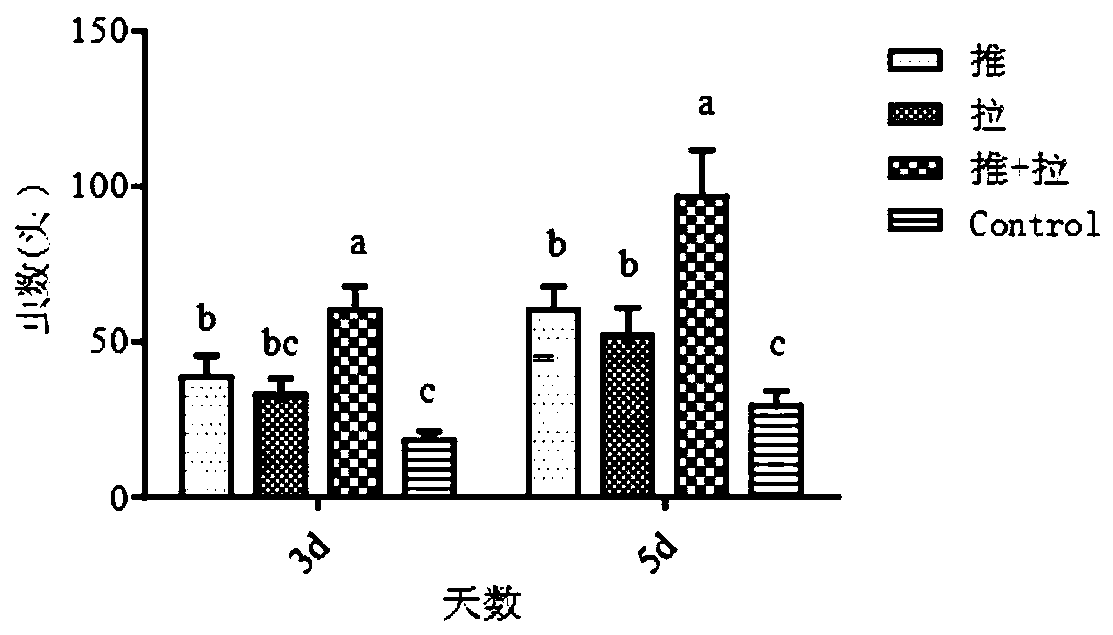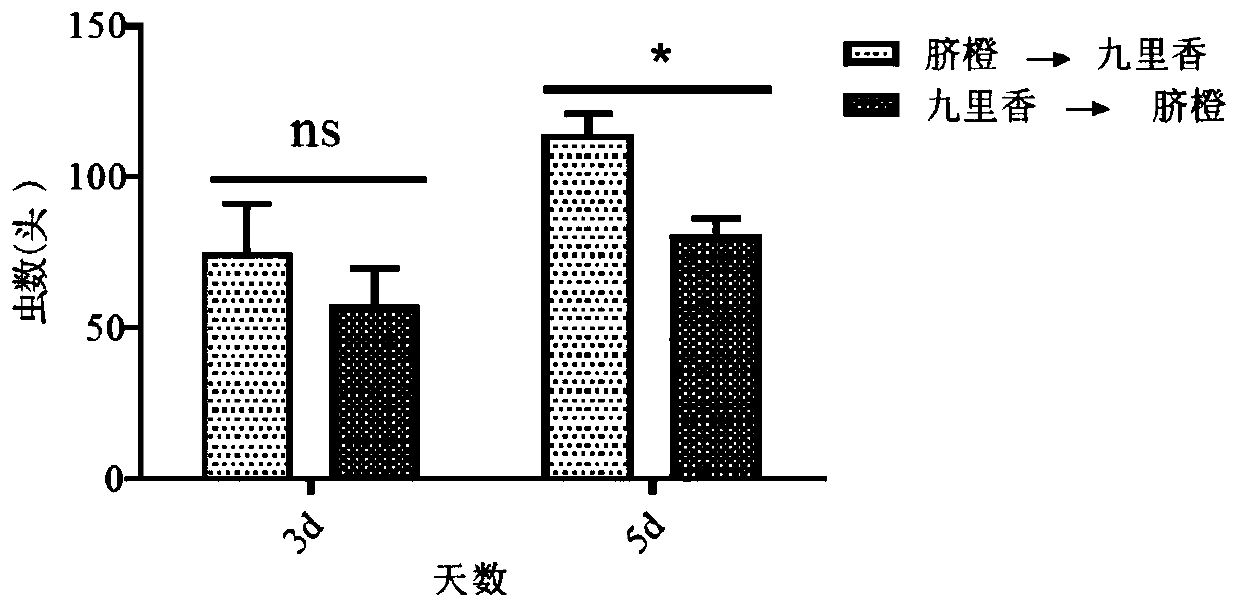Diaphorina citri kuwayama green prevention and control method
A citrus psyllid, green technology, applied in the field of green control of citrus psyllid, achieves high control efficiency, less resistance, and increased crop yield
- Summary
- Abstract
- Description
- Claims
- Application Information
AI Technical Summary
Problems solved by technology
Method used
Image
Examples
Embodiment 1
[0024] Example 1 Screening of citrus psyllid attractants and repellent active substances
[0025] Herbivorous insects mainly recognize host plant and non-host plant volatiles (Volatile organic compounds, VOCs) through the sense of smell, thereby promoting their growth and reproduction (Du Jiawei 2001). As more and more components of host and non-host plant volatiles have been identified, people began to apply artificially synthesized effective components to the development of attractants and repellents for pests (Xiang Yuyong et al. 2015) . In this study, the volatile components of the citrus psyllid host plant Murata and the non-host plant Lantana leaves were determined, and the same substances in the leaves of different treatments were tested on the concentration gradient behavior of the indoor Y-type olfactometer, and the citrus psyllids were screened out. Active substances with attracting or repelling effect.
[0026] 1 Materials and methods
[0027] 1.1 Test material ...
Embodiment 2
[0081] Example 2 The screening of attracting and repelling active substance field net room application conditions
[0082]Plant-derived attractant and repellent active substances have the advantages of low dosage, environmental friendliness, less pollution, less resistance, and simple use in the field, which can achieve sustainable control of target pests. Therefore, it is of great significance to apply these natural substances to pest control, insect-resistant breeding and biological control. In this study, the screened 2 kinds of repellent and 3 kinds of attractant active substances were screened for the application conditions in the field net room, specifically the effects of repellent active substances on the host selection and oviposition of citrus psyllids, and the effects of attractant active substances on citrus psyllids. The luring effect of lice and the most suitable hanging position, height and distance of field traps.
[0083] 1 Material method
[0084] 1.1 Test ...
Embodiment 3
[0156] Example 3 "Push-Pull" Technology Research on Controlling Citrus Psyllid
[0157] The pest "push-pull" strategy maximizes the efficiency of pest behavior manipulation by integrating the cumulative and synergistic effects of "push" and "pull" on pests. By orchestrating the distribution of pests, the efficiency of population reduction can also be increased. Pest control "push-pull" techniques are generally non-toxic and are effective tools in integrated pest management (IPM) programs to reduce pesticide use (Cook et al 2007). This study minimizes the damage of citrus psyllids by using the attractant and repellent active substances screened from host and non-host plants in a "push-pull" technique for controlling citrus psyllids.
[0158] 1 Materials and methods
[0159] 1.1 Test material
[0160] 1.1.1 Test plants
[0161] Jiulixiang (planted in April 2018, about 40cm-60cm in height), navel orange (about 40cm-60cm in height).
[0162] 1.1.2 Test materials
[0163] Tri...
PUM
 Login to View More
Login to View More Abstract
Description
Claims
Application Information
 Login to View More
Login to View More - R&D
- Intellectual Property
- Life Sciences
- Materials
- Tech Scout
- Unparalleled Data Quality
- Higher Quality Content
- 60% Fewer Hallucinations
Browse by: Latest US Patents, China's latest patents, Technical Efficacy Thesaurus, Application Domain, Technology Topic, Popular Technical Reports.
© 2025 PatSnap. All rights reserved.Legal|Privacy policy|Modern Slavery Act Transparency Statement|Sitemap|About US| Contact US: help@patsnap.com



